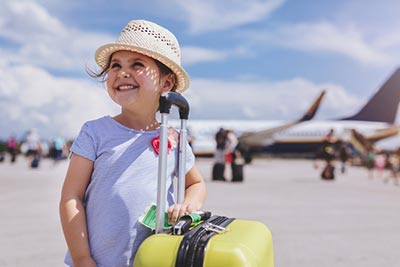Source: Transportation Security Administration
Following these tips will help you reduce your wait time at the security checkpoint.
 Visit the Transportation Security Administration’s website to learn more about air, rail, and highway travel. You can find out about any mass transit issues and receive homeland security alerts while you travel.
Visit the Transportation Security Administration’s website to learn more about air, rail, and highway travel. You can find out about any mass transit issues and receive homeland security alerts while you travel.
Before the Airport
- Do NOT pack or bring prohibited items to the airport. Read the Permitted and Prohibited Items list.
- Refrain from taking wrapped presents to the airport. TSA is recommending that you either ship wrapped packages ahead of time or wrap them on arrival. If the package alarms, TSA will need to unwrap it to investigate the source of the alarm.
- Avoid wearing shoes, clothing, jewelry, and accessories that contain metal. Metal items may set off the alarm on the metal detector.
- Put all undeveloped film and cameras with film in your carry-on baggage. Checked baggage screening equipment will damage undeveloped film.
- Carry-on baggage is limited to one carry-on bag plus one personal item. Personal items include laptops, purses, small backpacks, briefcases, or camera cases. Remember, 1+1.
- Place identification tags in and on all of your baggage. Don’t forget to label your laptop computer. These are one of the most forgotten items at Screening Checkpoints.
Before the Airport
- Put metal IN your carry-on bag. This includes jewelry, loose change, keys, mobile phones, pagers, and personal data assistants (PDAs).
- Take OUT your laptop computer. Place it in a bin, separate from its carrying case.
TSA also suggests that you help prevent the need to break your locks by keeping your bag unlocked
In some cases, screeners will have to open your baggage as part of the screening process. If your bag is unlocked then TSA will simply open the bag and screen the bag. However, if the bag is locked and TSA needs to open your bag then the locks may have to be broken. You may keep your bag locked if you choose but TSA is not liable for damage caused to locked bags that must be opened for security purposes.
Back to Travel Tips
Find more information about travel security at the Travel Security Administration’s Website.
